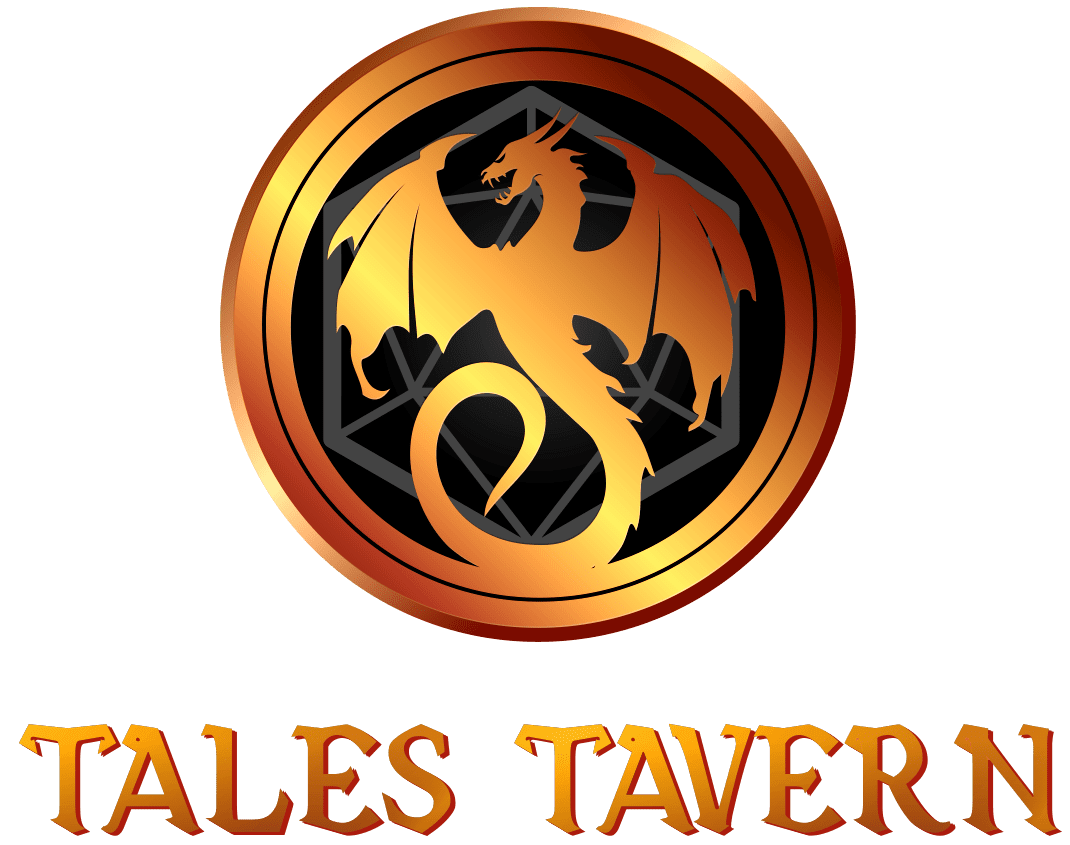Congratulations on joining the TaleSpire Community! You’ve got the software, you’re excited to start building, playing or maybe GMing a few games.
Well, as with any community, there’s a bit of lingo that you need to learn. You can get by without it, but if you know the terminology then you can communicate more clearly when talking about TaleSpire, D&D, or any tabletop role playing game. So let’s get started.
Now before I go into specifics of each term, TaleSpire is software to build, and play, tabletop role playing games, and therefore it has a lot of terms that coincide, often on purpose, with terms in those games. So if you play D&D, Pathfinder, or one of many others, many of these terms may seem familiar to you. This guide will help clarify what parts are the same and what’s different.
TaleSpire Building Terminology
Let’s talk building! In order to help make it a bit more concrete, many of these terms we’ll also explain in similarity to a very common building block system we all know and love. We’ll start with the smallest piece and work our way up to help explain all the TaleSpire terminology a bit at a time.
Assets
Assets are in essence the pieces used to build your creations. You find the blocks, place them on the board and start building. You can move, copy and rotate them in order to build. These assets can include tiles, props or minis. New assets are currently provided by the software through updates. So in terms of our favorite building blocks, these are the individual blocks and pieces.
Tiles
Tiles are the general building blocks. These assets can include walls, doors, bushes, floors or any other piece you’d use to build your layout. Tiles will snap to the grid as compared to props (listed below) which are smaller and can be placed more freeform. Once again, in simpler terms, these are the actual building block pieces, 2×2, 4×2 or whatever shape and size.
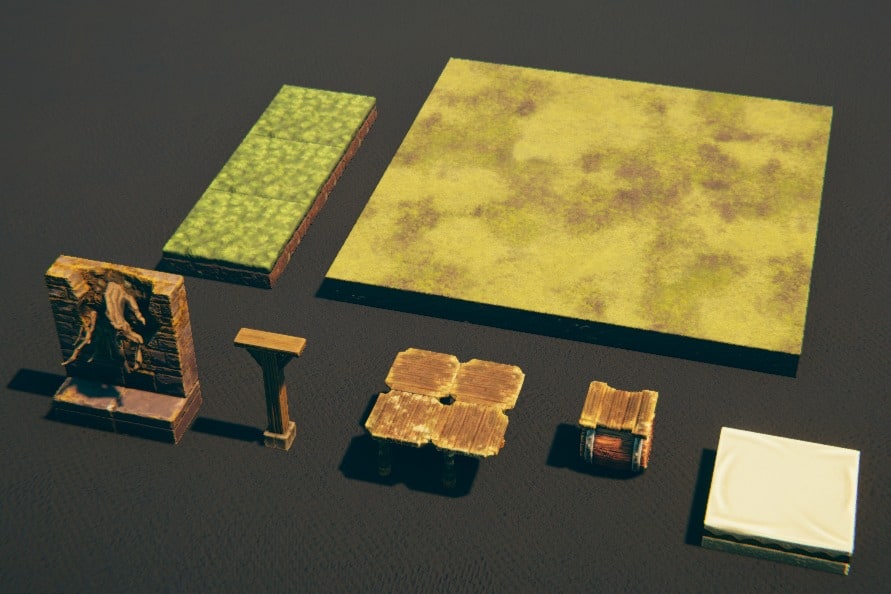
Props
Props are the term for individual objects in the TaleSpire software. These are what they sound like, they are distinct items that you drop in. This could be a table, or a plate, lamps or crystals. They also can be rotated and moved but generally are considered distinct items. These, in building block terms, are the unique individual pieces that aren’t used to build out the structure but add a bit of pizzazz and style to your creations.

Minis / Creatures
Minis are just what they sound like . They are the creatures, the characters, the miniatures that you place on the board. They can be player minis, monsters, NPCs, or any other place you’d want a dragon, a half-orc, a minstrel, or other creature. These can be controlled by the GM but also assigned to players to control, assigned names, made unique or even be set to fly. And yes, these in building block terms are the mini figs we all love.
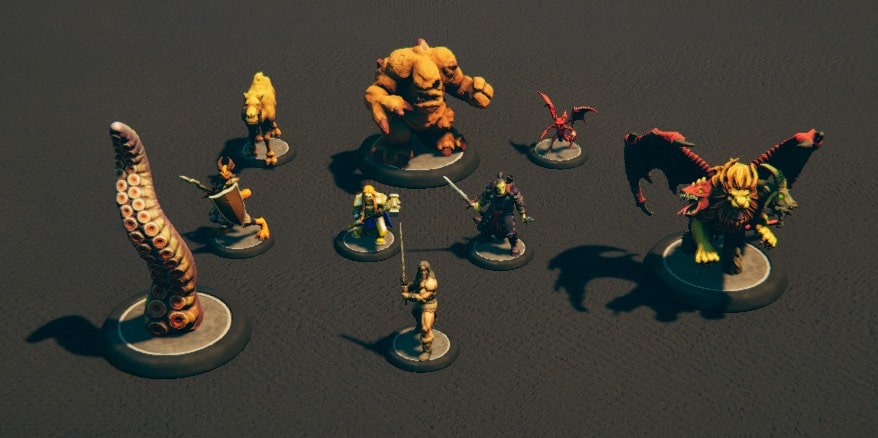
Slabs
Slabs are the term you probably haven’t heard before. Slabs are the term that has been accepted in the community for describing the pieces that are constructed from the assets, props and minis. Just like those building blocks that can be used to build buildings or cars or amusement parks, slabs are built with assets just the same. They can be as small as a simple garden, or as large as a mountainside with a dungeon inside. They can be copied out and shared here and if you browse our repository of community created slabs you can find things for just about any campaign you would run. There is a limit to the size you can copy in and out due to some technical requirements. This is the heart of the TaleSpire sharing community because as players build and share more, it makes the software easier for new GMs to set up new campaigns by mixing and matching slabs they create with creation from others.
Slabs can be shared between players by posting up to a talespire sharing site. Tales Tavern’s TaleSpire Slab Library can be browsed and searched and used to easily copy out a slab to reuse in your campaign. And it’s literally as easy as clicking copy on the site, and then pasting with Ctrl-V in TaleSpire.
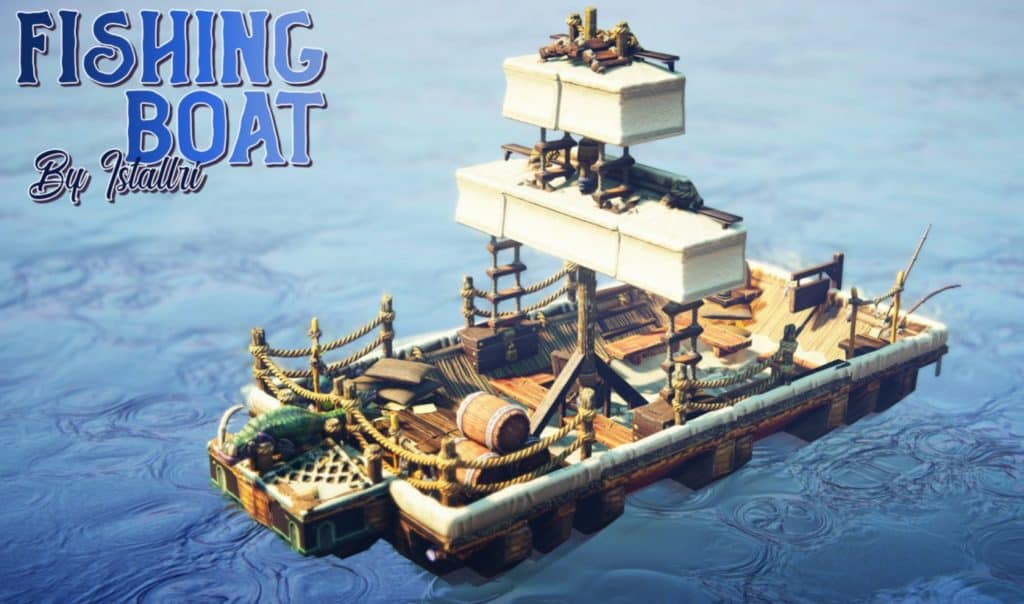
Boards
Boards are what they sound like. They are the board on which you place the assets. They are just like those flat green boards you’d get for building with that you’d put down and build on top of. The main difference, and it’s a huge one, is that in TaleSpire you don’t have to click everything down on the ground. In video game terms you can think of a board as a level. It contains a collection of slabs, assets, props, minis, to make up that place in your world for the players to explore.
Boards may now also be shared via a url. This is created in TaleSpire using the Publish Copy button on the Campaign Boards menu. These can then be shared in the TaleSpire Board and Slab Repository for others to use. If you want to use a board from another creator simply find the board on Tales Tavern, and then click the View in TaleSpire button. This will open pull the board into your open campaign. Or if you don’t want to instantly import you can use the copy code button and then in the boards screen you can paste in the board url to bring in manually whenever you want.
Players can navigate to different boards by being pulled by a GM, or may choose to change to a different board in game on their own with the board menu.
Quick Tip: If a player moves to a board and a GM is not present, they will not be able to move around or browse the board.

Campaigns
Campaigns are often very similar to D&D or other TTRPG campaigns. They are the largest collection in TaleSpire as they are a collection of boards. In building block terms it’s the full set that you purchased but in reality it’s simply a collection of boards put together in one place. So the campaign may be in a published D&D module and each board could be a separate location in that module.
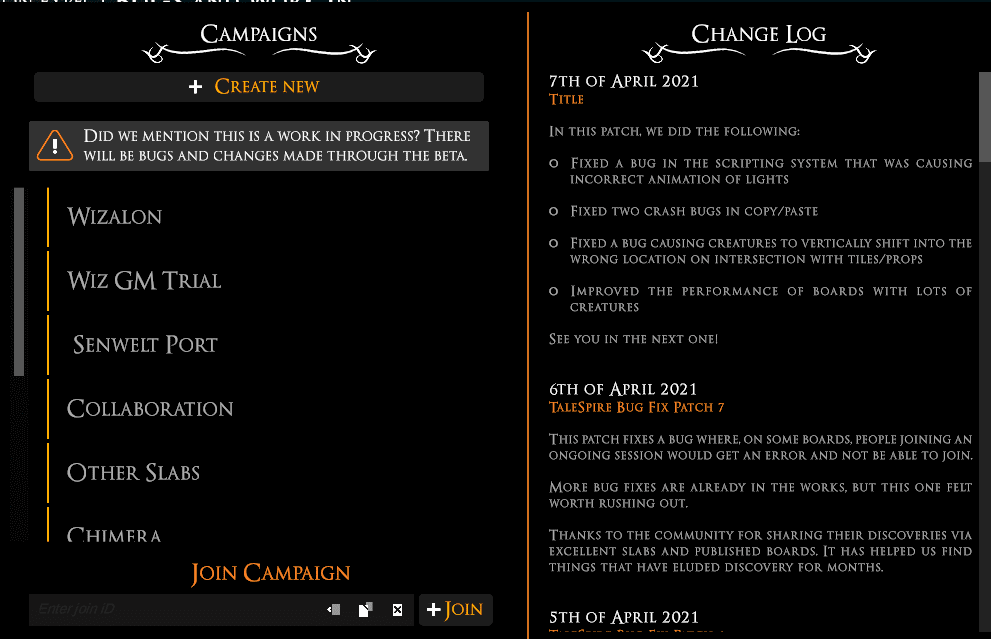
Building TL;DR
So basically in order of size from largest to smallest.
A TaleSpire campaign contains one or more boards, each board contains slabs and those slabs are made up of assets. The assets can be tiles, props or minis. And yes, boards can have free form tiles/props/minis that aren’t part of a larger creation.
TaleSpire specific terms
These are just a few terms that have specific meaning in TaleSpire that we figured we’d quickly mention.
Cutscene mode
This is a GM initiated mode that locks the players into a specific view. This way the GM can freeze the players and introduce something how they want with specific views, interactions, or atmosphere.
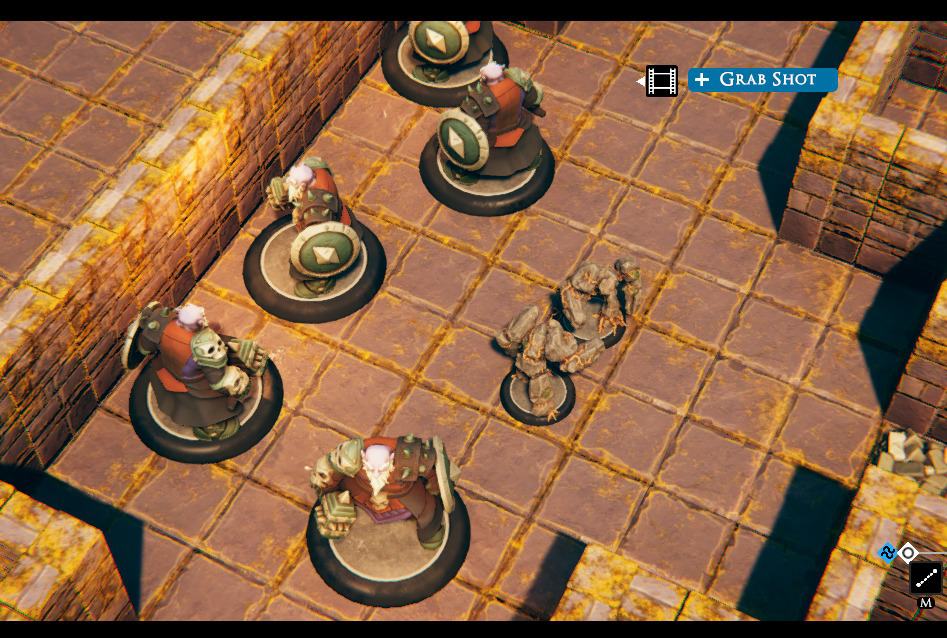
Initiative mode aka Turnbased Mode
Yes, combat is the heart of many tabletop role playing games and TaleSpire has an initiative mode. This mode lets the combat loop through the order of turns and allows the GM to add/remove creatures in that order at any time. This is also initiated by the GM in their interface.

Build mode
This is where you’ll live if you enjoy building, or even as a GM you’ll be here a little as you set up and build out your boards in your campaign. If you are a designated GM on the board you can simply hit B to enter build mode and start building. This will automatically be initiated if you paste in a slab that you’ve copied.
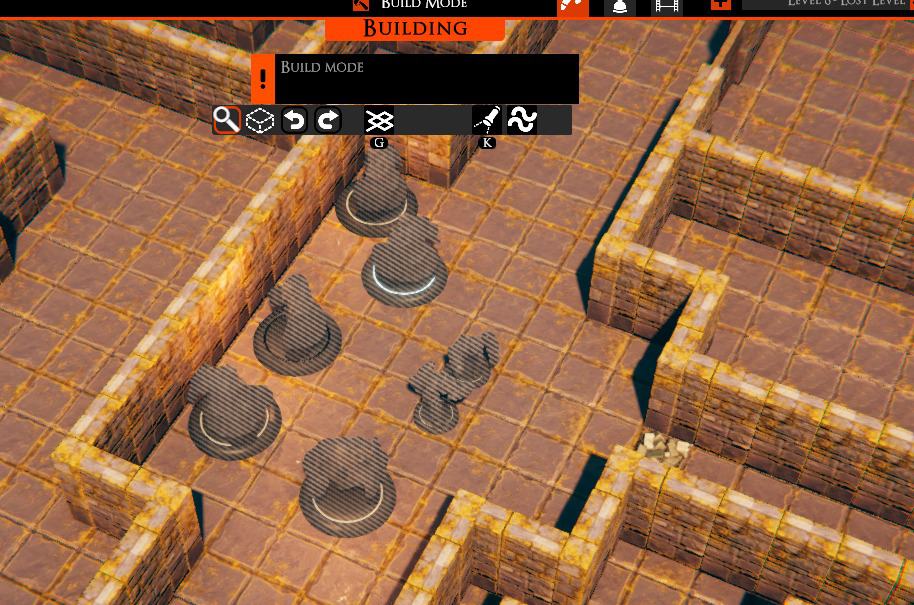
Photo mode
In order to get your best screen shots, TaleSpire has a free form camera mode activated using F6. There are a lot of settings to get the right shot and once you take the shot it is automatically stored on your computer for you.

We hope this helps you understand the various terminology in TaleSpire. For more detailed uses we’re creating distinct guides. So check out our Ultimate TaleSpire Players guide and other guides coming soon.
If you find any problems with this article, think something more needs to be added, or simply have ideas that will help make this a better resource, let us know. We want this to be a community resource for every TaleSpire fan.
